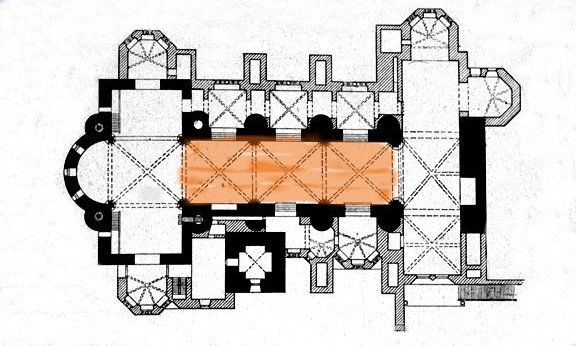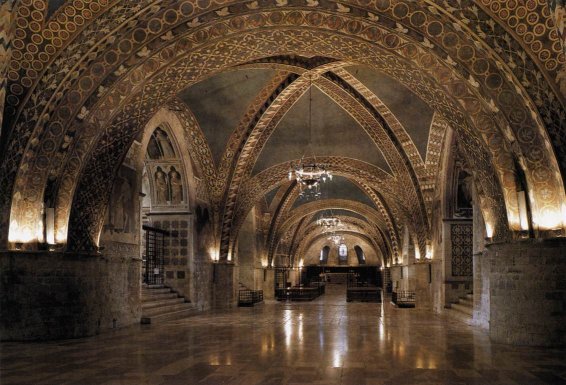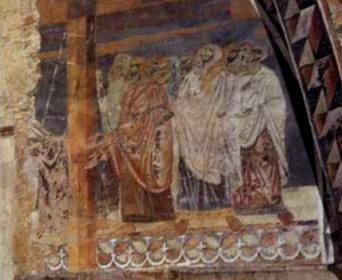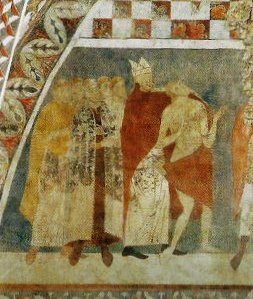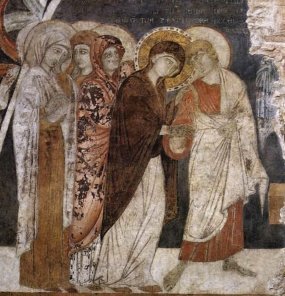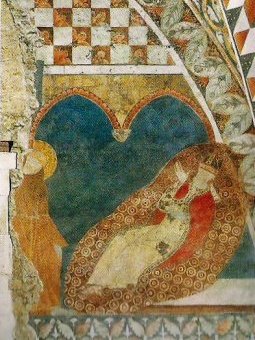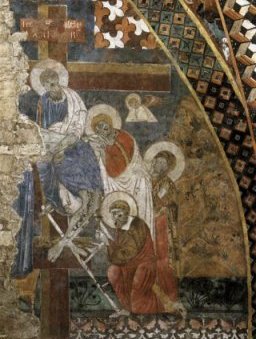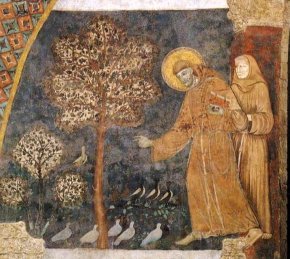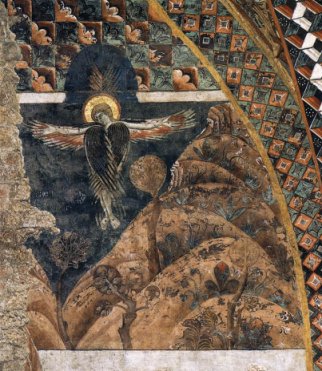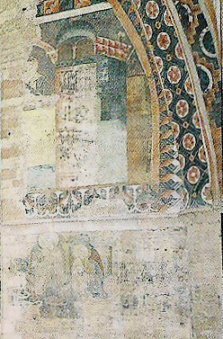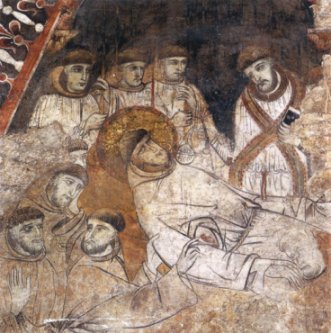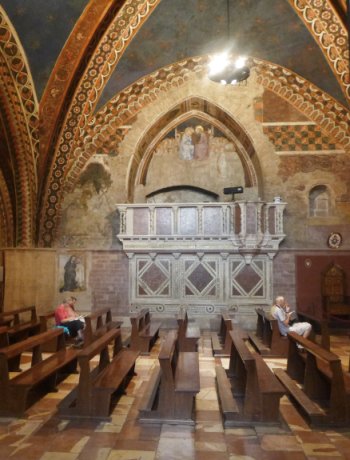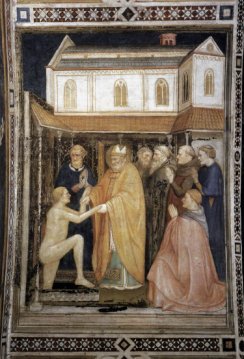|
San Francesco, Assisi - Lower Church |
|
|
Nave |
|
|
|
|
| The nave consists of three bays, with chapels leading of from them. It was originally decorated with scenes from the Passion of Christ and the life of St Francis, but when the chapels were built around 1300 these were badly damaged and only fragments remain. The fragments are of considerable interest, however. Very little art survives from the mid thirteenth century, and these, by an unknown artist known as the Master of St. Francis, prefigure in style the later work of the Giotto school and, some say, may have strongly influenced it. The arrangement of the various images is of great interest too, and I'll look closely at this. In this section of my site I have stressed the importance of understanding the context for any piece of religious art. These early frescos, battered though they may be, are one of the best examples I can offer. | |
|
|
|
| The scenes of the Passion of Christ appear on the right, the most sacred side. They are paired with scenes from the Life of St Francis on the left. Some of the connections between the two are clear enough; others are not. Let's look at a paired list and see what we can make of them, then get some help from Thomas of Celeno. |
|
|
|
Left hand side: the Life of St Francis |
Bay 1 (Nearest the Narthex) |
|
|
Christ being stripped of his garments before
Crucifixion The Crucified Christ Entrusts the Virgin Mary to the Care of St John |
St Francis renounces worldly goods Pope Innocent III dreams of St Francis |
| Bay 2 Deposition of Christ St Francis preaching to the Birds Lamentation over the body of Christ Stigmata of St Francis |
|
| Bay 3 The apparition of Christ at Emmaus Verification of the Stigmata |
|
| Bay 2 is the
tricky one, so let's look at Bays 1 and 3 first. The legend of St Francis tells us that in renouncing worldly goods he removed his clothes and gave them back to his father - a clear parallel with the stripping of Christ. The second is a little more difficult. The Virgin Mary is seen as a symbol of the church, placed in the safe hands of John the Evangelist. The importance of the Virgin to the Franciscans started early. Thomas of Celano reflects this when wring about the place the order was founded, the Porziuncola near Assisi: This location, according to the ancient inhabitants, was called by another name, Santa Maria degli Angeli . . . There stood on this spot a church dedicated to the Virgin Mary, who, for her humility deserved, after the Son, to be ruler of all the Saints. On this spot began the Order of Friars Minors. . . . The Holy Mother loved this place more than any other, and commanded the monks to worship it with special devotion. (Second Life, Book 1 Ch XII) What about Pope Innocent's dream? Thomas tells us this. Francis is before the Pope, hoping for approval of his new movement: Christ asks John to care for the Virgin Mary, who stands for the church. Innocent's dream passes that responsibility on to Francis. In the third bay the parallel is more straightforward, though the condition of the Passion image has made positive identification difficult. It shows Christ at Emmaus, after the crucifixion: But Thomas, one of the twelve, called Didymus, was not with them when Jesus came. The other disciples therefore said unto him, We have seen the Lord. But he said unto them, Except I shall see in his hands the print of the nails, and put my finger into the print of the nails, and thrust my hand into his side, I will not believe. John 20 24/25 A clear match with the scene of the
verification of Francis's stigmata. |
|
| Bay 1 | |
|
|
|
|
|
|
| Bay 2 | |
|
|
|
|
|
|
| Bay 3 | |
|
|
|
| When the iconostasis was removed the left side of bay 3 was redesigned with a vault to match the opening to the Magdalen chapel opposite. The space was then filled with a cantoria (platform for a choir) constructed, it is believed, with marble from the iconostasis. This was dedicated to the little-known St Stanislas, an 11th century archbishop of Krakow who came to a very sticky end, as graphically illustrated by Puccio Capanna who frescoed the space around 1337. The construction is known as the Tribune of St Stanislas. |
|
|
|
|
|
|
|
|
|
|
